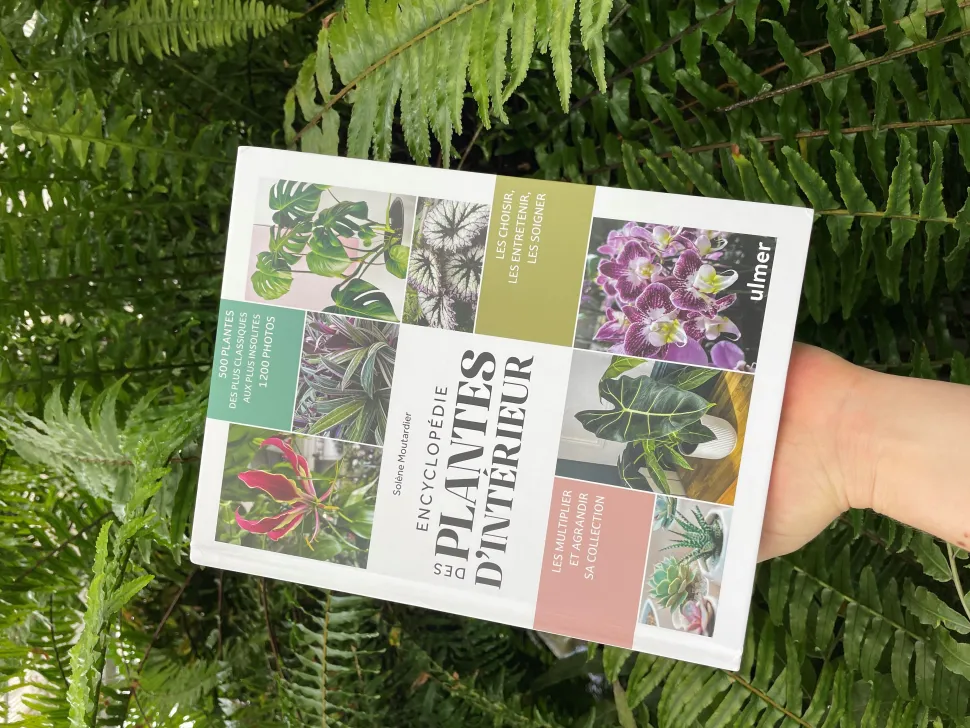
Meet Solène, horticulturist and author
Article for :All parent plants
A horticulturist for 20 years, Solène Moutardier works in the Greenhouses of the Luxembourg Gardens in Paris. This fan of begonias and Araceae has just published her first book: L'encyclopédie des plantes d'intérieur. Meet the plant-addict who has turned her passion into a profession.
How did you get interested in plants?
I first became really interested in plants when I was in my twenties, thanks to my boyfriend. He was studying biology and we went to the Grandes Serres at the Jardin des Plantes. I was fascinated to discover that the Ikea ficus I had on my coffee table was a giant in the wild. We then visited the Serres d'Auteuil and I decided that this was the job I wanted to do.
At the time, I was a sales assistant at H&M. I asked myself, at 40, could I still see myself as a sales assistant in a store, not seeing the light during the day? I said no, I think I'd do well with plants. I decided to retrain and took an accelerated training course with the AFPA. Today, I'm 41 and I don't regret my choice.
How many plants do you own?
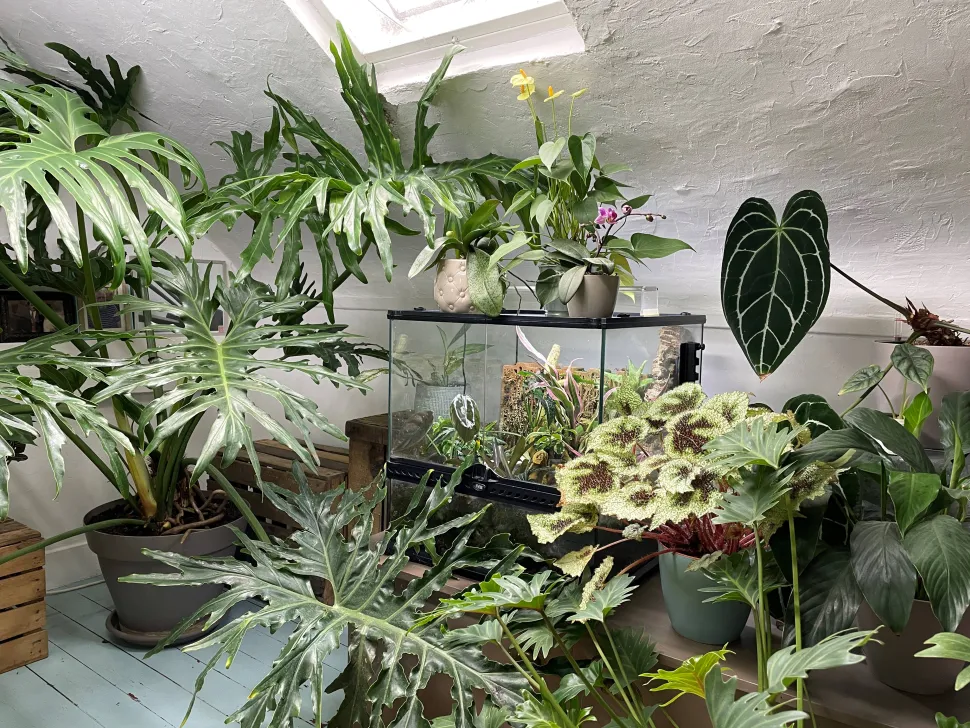
A (small) part of Solène's plant collection
I'm lucky enough to live in a house, so I have plenty of room. But I got a bit carried away! I have between 200 and 250 plants. I have a bit of everything. Araceae, Marantaceae, caudex plants, ferns, terrariums..
What are your favorite varieties?
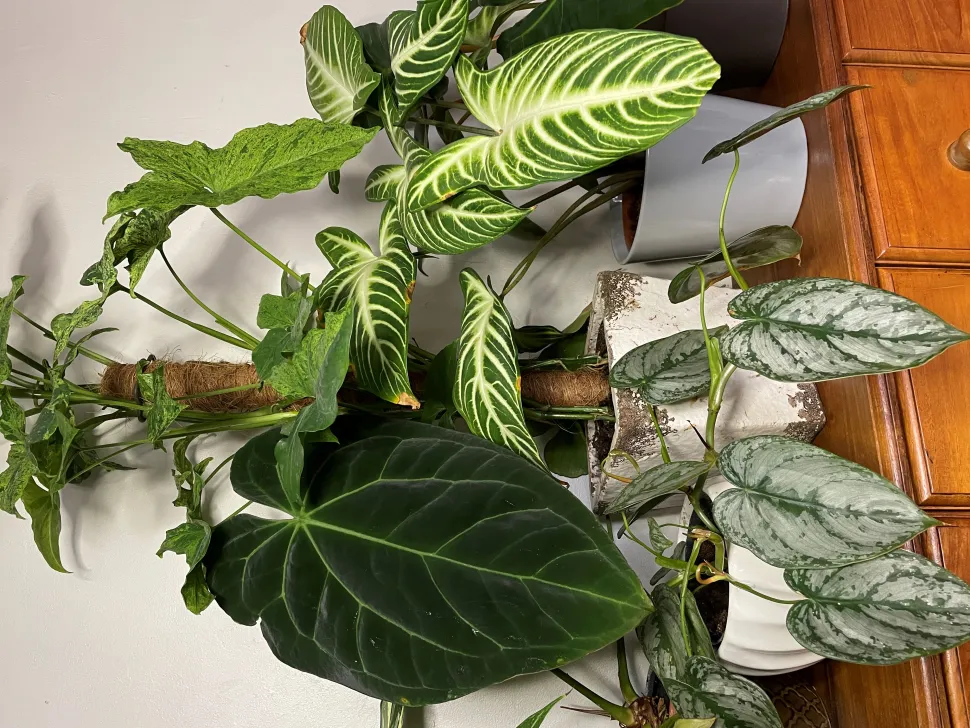
Alocasia, Pothos and Scindapsus belong to the Araceae family
I love the Araceae (Monstera, Alocasia, Philodendron), for the jungle feel. It's exactly the kind of vegetation you imagine when you think of tropical forests.
I'm also a real fan of begonias. In fact, I'm a member of the Association française des amateurs de bégonias (AFABEGO). We organize events to raise awareness of this plant, which often has an old-fashioned image. In reality, it's a very varied genus. Once again, I was fascinated when I discovered that there were tiny begonias, giant begonias, foliage begonias, flowering begonias... Things are starting to change a little. We're now seeing new species arrive with colorful, textured foliage, such as Begonia masoniana. There are also new hybrids of the Royal Begonia (Begonia rex), which are much easier to grow.
How did you come up with the idea for the book?
I created a website, lajungledeso, to share my passion for houseplants. I wanted to get the word out, so I sent a message to a horticultural journalist. He also worked for Ulmer Editions. One thing led to another and they suggested I write a book.
The book is in two parts. The first part is devoted to advice on caring for houseplants. Then comes the encyclopedia. It brings together 500 varieties of houseplants, from the most common to the more unusual and rare. And then we present all the new things we're coming across now.
With 500 plants listed, how did you select the ones that appear in the book?
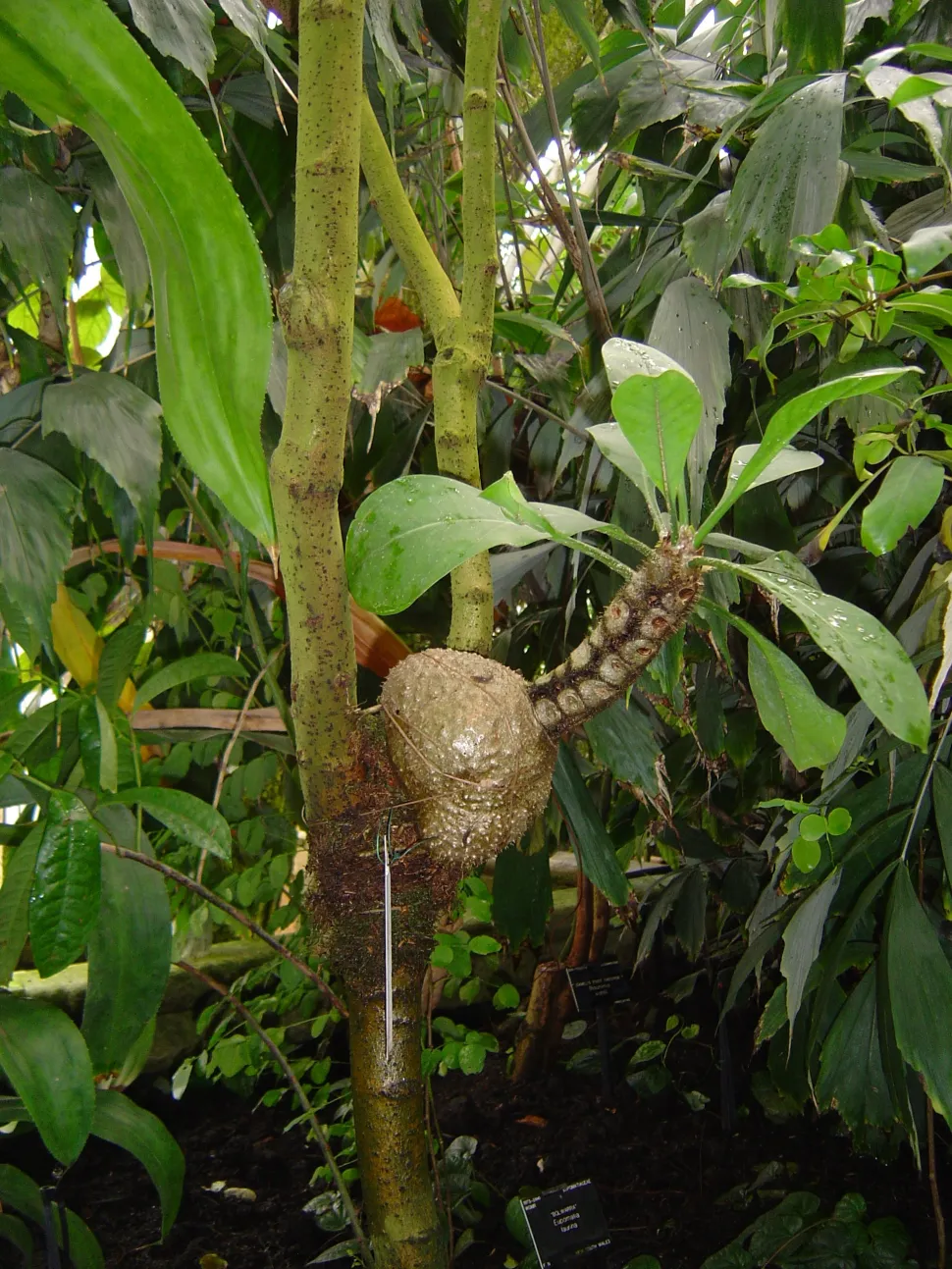
Myrmecodia becarii is a plant native to Australia
When we chose the plants with my editor, we tried to appeal to everyone, from beginners to seasoned amateurs. We've included the great classics, such as Spathiphyllum, Clivia and Araceae, which people really like. I also wanted to include a section on ferns and caudex plants. These are plants I love, but they're not very well known.
One example is Myrmecodia, a plant that lives in symbiosis with ants. It has a bulbous trunk that houses a network of galleries. The ants live in the plant and, in exchange for their accommodation, defend it against aggression from other insects. It's a species you can grow at home, in a pot, even if the ants in our house are too big to live in the trunk. But don't worry, Myrmecodia can live without insects!
For someone new to plant care, what species would you recommend and why?
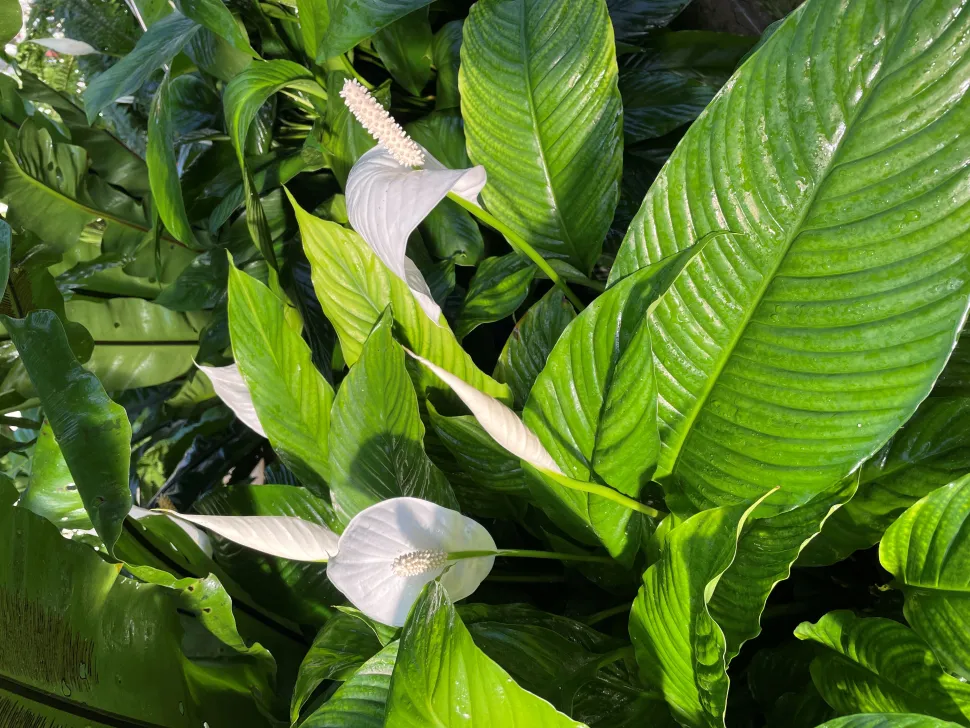
Spathiphyllum wallisii blooms almost all year round, even indoors
I love spathiphyllum, for example. I find it easy to care for, flowers quite easily and doesn't mind watering mistakes. Chlorophytum Chlorophytum comosum) too. Very pretty. They're great classics, but they're timeless. And they're plants that will put up with mistakes.
On the other hand, which plant would you recommend to someone who wants something a little difficult?
Some ferns are very difficult to grow! And then there are orchids. While Phalaenopsis are pretty straightforward, others are much more delicate, like the epiphytic mini-orchids that you grow on cork plates. They require regular watering, which can be quite demanding.
What common mistakes do you observe among houseplant enthusiasts, and how can they be remedied?
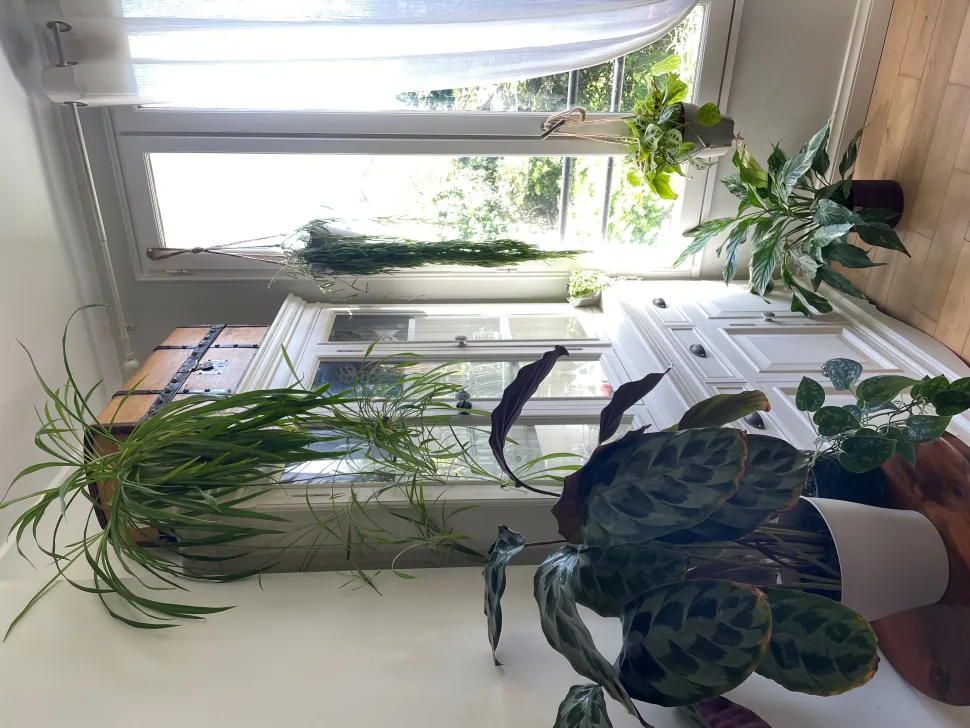
Your plants will always do better behind a window.
The mistake we all make in the beginning is light. We don't realize it, but the light useful to plants is different from the light we perceive. We tend to keep our plants away from windows. Especially as we often hear that direct sunlight is dangerous. So we place plants too far from windows. They end up in the dark and can't grow. Even with the right substrate and watering, they won't grow. Light is the main parameter.
If you had to give just one piece of advice to someone on how to look after their plants, what would it be?
I'm a fan of simplicity. I grow my most fragile plants in a terrarium, but for the rest, I keep things simple. I don't use humidifiers, I don't mist... Light and watering are the two most important parameters, well before the substrate. Almost all plants can be grown with a basic, commercially available substrate.
You also need to adapt to the way you grow your plants. Some will water a lot, others less... And you also need to take into account the conditions you have at home.
Are there any plants you can't grow?
Impatiens! There are some really beautiful varieties, like Impatiens morsei, which has pink foliage. At home, it doesn't work. I just can't do it. It's just weird. I've decided to stop.
But from time to time, it's nice to challenge yourself and try out plants you've missed. For example, when I started out, I killed a lot of Pachira Money tree). I would always buy a small Pachira from Ikea and it would eventually die, much to my despair. Several years ago, when I moved house, I broke down again. That was six or seven years ago and it's still there. I finally understood how the shrub worked, the light and watering it needed.
What projects are you working on?
I'm currently working on other books. I'm also continuing to develop my website. And I'd like to move house, so I can build a greenhouse. I love working in greenhouses and I'm afraid I'll miss it too much when I retire!
By Servane Nemetz
on 02-01-2025 at 15h48
on 02-01-2025 at 15h48












